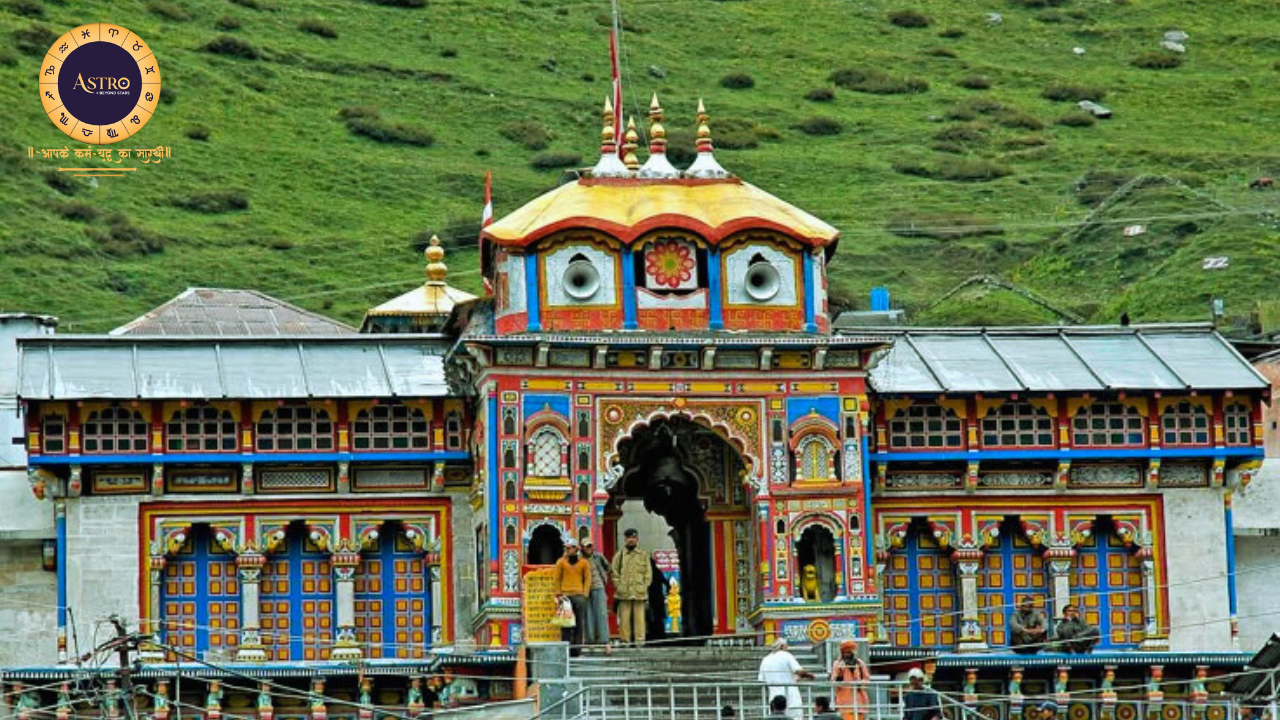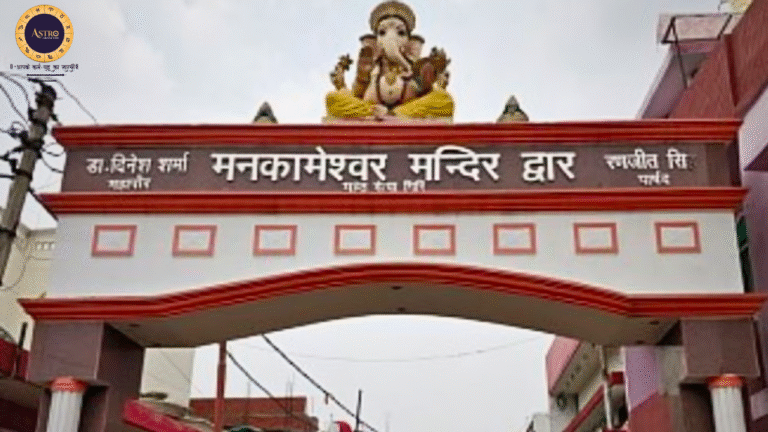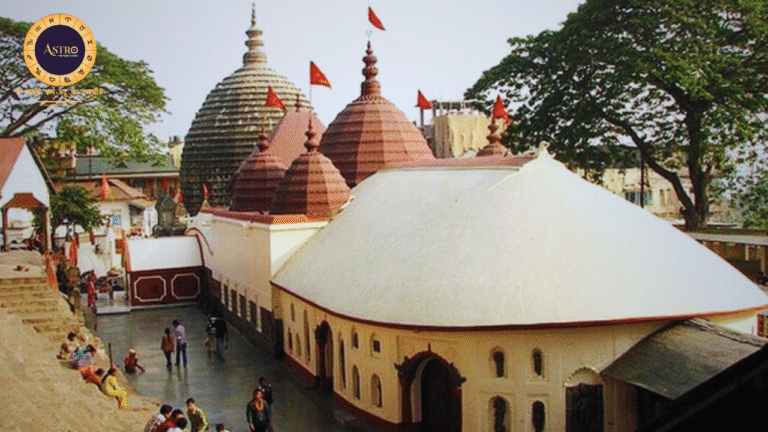Badrinath Temple is one of the most revered pilgrimage sites in India, located in the Chamoli district of Uttarakhand. It is dedicated to Lord Vishnu and is one of the Char Dham (four abodes) and Chota Char Dham pilgrimage circuits in Hinduism. The temple is located in Garhwal hills in Chamoli district along the banks of Alaknanda River.
Location
- Situated in the town of Badrinath at an altitude of approximately 3,300 meters (10,827 feet) in the Garhwal Himalayas.
- Lies on the banks of the Alaknanda River.
- Surrounded by the Nar and Narayana mountain ranges, with the majestic Neelkanth Peak forming a stunning backdrop.
History and Significance
- The temple’s origins are believed to date back to the Vedic era. According to legend, Adi Shankaracharya, an 8th-century saint and philosopher, reestablished the temple in its current form.
- It is mentioned in several ancient texts, including the Vishnu Puranaand Mahabharata.
- Badrinath is also associated with the legend of Nar and Narayana (forms of Lord Vishnu), who performed penance here.
Numerous sources assert that there is a lack of historical documentation regarding the temple; however, references to the principal deity Badrinath can be found in Vedic texts dating from approximately 1750 to 500 BCE. Some narratives suggest that the shrine was venerated in some capacity during the Vedic era. Subsequently, during the reign of Ashoka, the proliferation of Buddhism may have led to the transformation of this shrine into a Buddhist site. It remained a Buddhist shrine until the 8th century, when Adi Shankara revitalized the site and reestablished it as a Hindu temple.
Architecture
- Built in the traditional North Indian style with a colorful facade and a towering spire.
- The sanctum houses a black stone (Saligram) idol of Lord Badrinarayan (a form of Vishnu) seated in a meditative posture.
- The idol is about 3.3 feet tall and is believed to have been installed by Adi Shankaracharya.
- The temple complex includes a Tapt Kund (hot water spring) where devotees take a purifying dip before entering the shrine.
Religious Importance
- It is part of the Char Dhampilgrimage, which includes Badrinath (North), Dwarka (West), Puri (East), and Rameshwaram (South).
- It is also one of the 108 Divya Desams (sacred Vishnu temples) revered in Vaishnavism.
108 Divya Desams
The Badrinath Temple holds immense significance as one of the 108 Divya Desams, which are sacred temples dedicated to Lord Vishnu and revered by Vaishnavas. In this temple, Vishnu is worshipped as Badrinath, a meditative form of the deity.
The Divya Desams are mentioned in the works of the Alvars, Tamil saint-poets who composed hymns in praise of Vishnu in the Nalayira Divya Prabandham, a collection of 4,000 devotional hymns. Badrinath is unique among the Divya Desams because of its high-altitude Himalayan location, setting it apart from the predominantly South Indian Divya Desams.
The worship at Badrinath reflects its Vaishnavite roots:
- The Idol:The presiding deity, Lord Badrinath, is depicted in a seated meditative pose, symbolizing penance and asceticism.
- Spiritual Significance:The temple is considered a place where Vishnu performs penance to absolve humanity of sins and maintain cosmic balance.
- Vaishnavite Traditions:Rituals at the temple follow Vaishnavite customs, and visiting Badrinath is believed to cleanse one’s soul and grant liberation (moksha).
The Badrinath Temple holds immense significance in ancient Hindu scriptures and devotional literature.
Its mentions in key religious texts underscore its sacredness and its role as a prominent pilgrimage site for Vaishnavites.
Mentions in Ancient Texts
- Vishnu Purana and Skanda Purana:
- The Vishnu Puranadescribes Badrinath as one of the most sacred abodes of Lord Vishnu, emphasizing its importance as a site of penance and devotion.
- The Skanda Puranadedicates a section to Badrinath, detailing the legends, rituals, and spiritual significance of the temple. It describes the glory of the site, the surrounding geography, and its power to grant liberation (moksha).
- Naalayira Divya Prabandham: –The Naalayira Divya Prabandhamis a revered collection of 4,000 Tamil hymns composed by the Alvar saints (6th–9th centuries CE) in praise of Lord Vishnu.
- Badrinath, known as Badri Narayanain these hymns, is glorified as one of the 108 Divya Desams (sacred Vishnu temples). The Alvars extol its beauty, spiritual significance, and the compassionate nature of the deity residing there.
- The hymns vividly describe the temple as a divine realm where Lord Vishnu resides in a meditative posture to protect and bless his devotees.
Significance in Vaishnavite Theology
- The inclusion of Badrinath in both Sanskrit textslike the Vishnu Purana and Tamil devotional literature like the Divya Prabandham highlights its pan-Indian importance.
- It bridges the cultural and linguistic diversity of Hinduism, uniting Northern and Southern traditions under the common worship of Vishnu.
Reflection in Rituals and Practices
- The temple rituals align with Vaishnavite traditions described in these texts, emphasizing devotion (bhakti) and penance.
- Pilgrims often recite verses from the Skanda Purana and Divya Prabandham during their journey to Badrinath, further enriching the spiritual experience.
The priests at the Badrinath Temple, known as Rawals, come from South India, which is a unique and ancient tradition.
The Rawal Tradition
- The Rawal, or chief priest of the Badrinath Temple, is traditionally a Nambudiri Brahminfrom Kerala.
- This tradition is believed to have been established by Adi Shankaracharya, the 8th-century philosopher and theologian who revitalized the temple. He chose South Indian Brahmins to ensure that the priestly duties were performed by scholars well-versed in Vedic rituals and Vaishnavite traditions.
Roles and Responsibilities of the Rawal
- Daily Worship:The Rawal performs key rituals and offerings to the presiding deity, Lord Badrinath.
- Celibacy Requirement:The Rawal must remain celibate during his tenure at the temple.
- Service Tenure:The Rawal serves for a fixed period, after which a new priest is appointed.
- Seasonal Migration:Since the temple closes during the winter months, the Rawal relocates to Joshimath, the winter seat of Lord Badrinath, to continue worship there.
Selection Process
- The Rawal is selected by the Shri Badrinath-Kedarnath Temple Committee in consultation with the head of the Jyotirmath (Joshimath) monastery.
- The selection prioritizes candidates with exceptional Vedic knowledge and experience in Vaishnavite traditions.
Symbolism of South Indian Priests
- This tradition underscores the pan-Indian nature of Hindu spirituality, where sacred duties transcend regional boundaries.
- It highlights the unifying role of Adi Shankaracharya in integrating diverse sects and practices within Hinduism.
Fun Fact
- During the temple’s winter closure, the idol of Lord Badrinath is moved to the Narsimha Templein Joshimath, and the Rawal continues to conduct rituals there.
Accessibility and Pilgrimage Season
- The temple is open to devotees between April/May and November, depending on weather conditions. It remains closed during the harsh winter months due to heavy snowfall.
- The annual Badri-Kedar Utsavand Mata Murti Ka Mela are significant events celebrated here.
Legends
- One of the famous legends involves Lord Vishnu choosing the location to meditate and be discovered by his consort, Goddess Lakshmi, who took the form of a Badri tree to shield him.
- It is believed the Pandavas, from the Mahabharata, passed through Badrinath on their way to heaven.
The most cherished legends associated with the Badrinath Temple and its divine origins:
- The Legend of Lord Vishnu and Goddess Lakshmi at Badrinath
-
- According to the legend, Lord Vishnu decided to perform penance in the Himalayas for the welfare of the world. He chose the serene and remote spot near the Alaknanda River, which later came to be known as Badrinath.
- During his meditation, the region experienced harsh weather conditions, including freezing cold winds and snowfall. To protect Lord Vishnu, his consort Goddess Lakshmitook the form of a Badri tree (jujube tree) and stood over him, shielding him from the elements.
- Pleased by her devotion and sacrifice, Lord Vishnu named the place Badrika Ashram, which eventually became known as Badrinath.
- This legend beautifully signifies the unity of Vishnu and Lakshmi, emphasizing their divine partnership in protecting and nurturing the universe.
Symbolism of the Story
- The legend underscores the themes of devotion, sacrifice, and divine love.
- The Badri tree represents selfless service and the eternal bond between Vishnu and Lakshmi.
- The region’s sacredness is attributed to this divine act, making it a place for penance and spiritual growth.
This story is often recounted by devotees and is considered a key part of Badrinath’s spiritual heritage.
- Badrinath has a profound connection to the Pandavasfrom the Mahabharata, as it is believed to be part of their journey toward Swargarohini (the ascent to heaven).
The Pandavas’ Journey through Badrinath
- After the great Kurukshetra war, the Pandavas decided to renounce their kingdom and undertake the path of moksha(liberation). This journey is known as the Mahaprasthanam or “Great Departure.”
- As part of their journey to reach Swarga (heaven), they passed through various sacred locations in the Himalayas. Badrinath was a significant stop on this pilgrimage.
- It is said that the Pandavas crossed the Alaknanda Rivernear Badrinath and performed penance at this holy site. They prayed to Lord Vishnu to absolve them of their sins committed during the war.
- Continuing their journey, the Pandavas moved towards the Satopanth Tal(a glacial lake near Badrinath, meaning “Path of Truth”), which is believed to be the site where the brothers sought final purification.
- Only Yudhishthira, the eldest Pandava, and a dog (who represented the god Dharma) were able to reach the heavenly abode. The others fell along the way, symbolizing the gradual shedding of human attachments and sins.
Connection to Local Geography
- The Swargarohini Glacierand Satopanth Tal near Badrinath are believed to mark the path the Pandavas took toward heaven. These are popular trekking routes today for pilgrims and adventurers.
- Satopanth Talis also considered sacred, as it is said that Lord Brahma, Vishnu, and Shiva meditate at the three corners of this triangular lake.
Symbolism in the Legend
- The journey of the Pandavas through Badrinath represents the pursuit of spiritual liberation and the inevitability of human limitations.
- Badrinath’s role in the legend reinforces its reputation as a gateway to the divine and a place where sins are washed away.
Travel Tips
- Nearest airport: Jolly Grant Airport in Dehradun (around 310 km away).
- Nearest railway station: Rishikesh (about 297 km away).
- Accessible by road through scenic mountain routes.
- Visitors are advised to carry warm clothing due to the cold climate.




